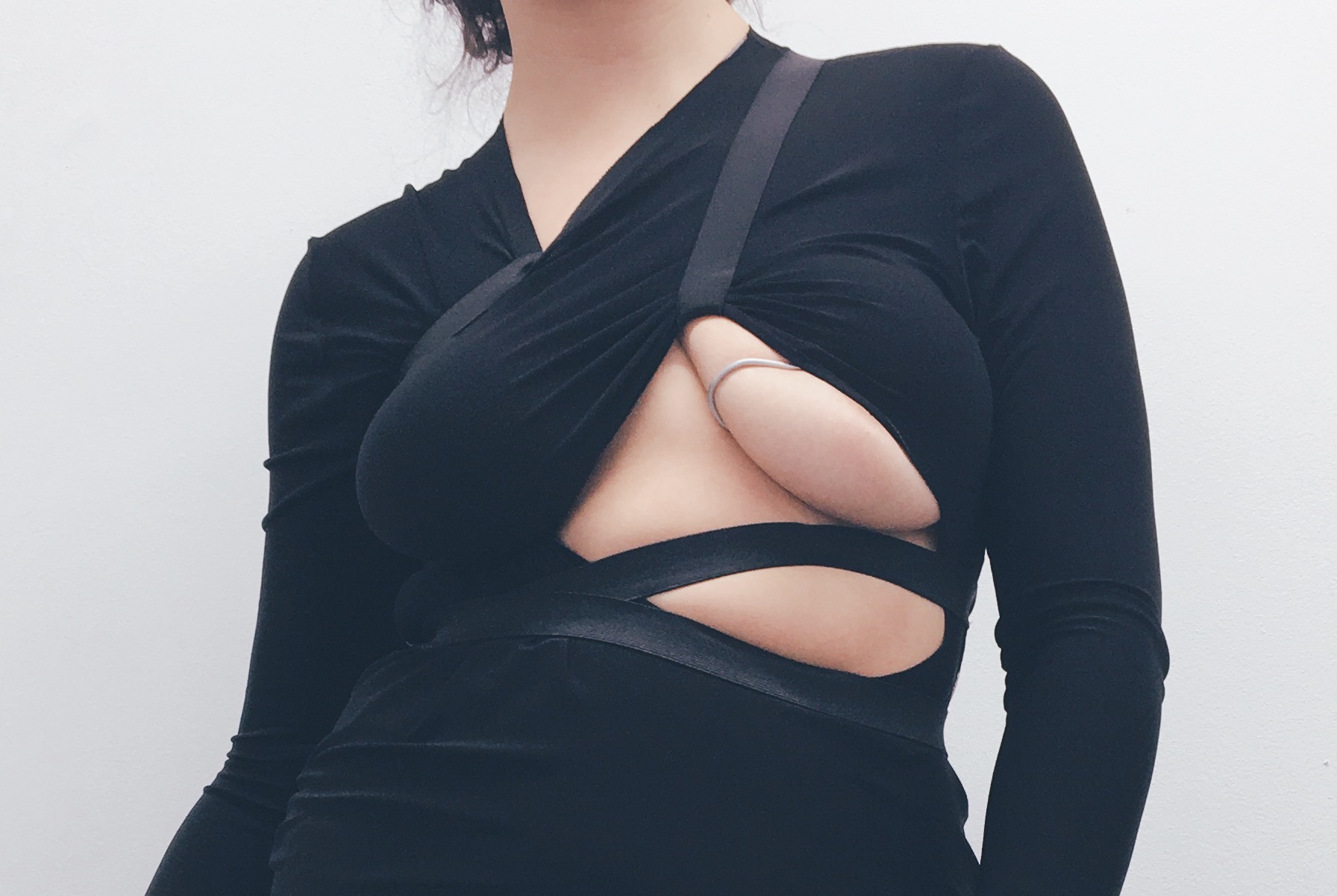“Where I come from, the body standards you’re expected to live up are completely different to those you find in the UK,” explains Karoline Vitto, the Brazil-born, London-based designer whose design practice navigates the ideals she grew up with. “There’s a greater emphasis on working out a lot, not to mention the plastic surgery culture that comes with it.”
Over the last decade, conversations in the fashion industry have increasingly focussed on the need to dismantle ideas of what a “perfect” body looks like. Consequently, we’ve seen a visible uptick in models with figures that diverge from former industry standards, implying a movement towards real, representative body diversity. But, too often, we forget that ideas of bodily perfection, and therefore the efforts required to dispel them, are culturally specific issues. Fashion is just one of many aspects that frame how we view and relate to our physical selves.
In Karoline’s homeland, a wasp-waisted Kim K-inspired silhouette is placed high on an ideological pedestal, with the pressure to achieve such improbable proportions leading the designer to waist-training: “I had a cincher that I bought in Brazil a few years ago,” she says. “Everyone was so obsessed with waist training and the Kardashian look — I even joined a Facebook group dedicated to it!” As with most aesthetic trends, the cincher was far from a Cinderella fix, but rather a nifty hook for an entire body-image-based economy. “It was crazy how women were buying not only the trainer itself, but also other related products. Sure, you would have a tighter waist when you wore it, but some of your fat would pop up at the sides, so you needed specific bras and pants to go with it. I quickly found myself following the same path,” she says.
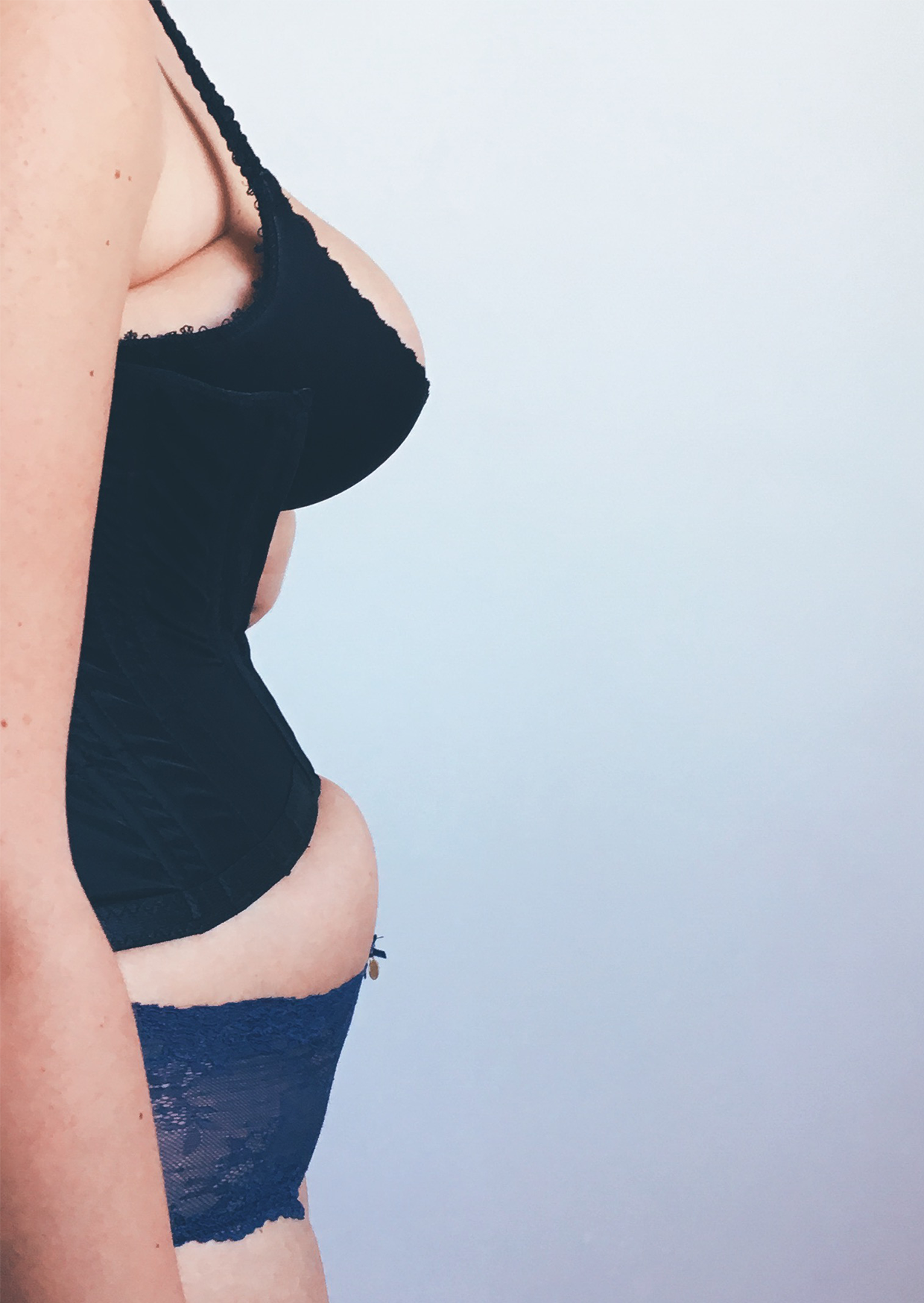
Karoline’s dive into the world of waist-training, however, would go on to serve as the impetus for her graduate collection from London’s Royal College of Art. Back in the UK from a summer in Brazil, she tried the piece on and was struck by a sudden awareness of how her immediate cultural context influenced her relationship to her body. “I realised that whatever was happening with my relationship to my body was worth exploring. Something similar happened with all of my Brazillian friends living in the UK, actually: when we moved here, or to other places in Europe, our body image changed a lot. It feels like there’s less pressure around how people think about body image here compared to back home.” she says.
Eager to explore the phenomenon further, she placed herself at the heart of her research, taking a series of photographs of her in the cincher, highlighting the war waged between the restrictive garment and the flesh it sought to contain. “To be able to discuss body image, it needed to come from a very personal place — I can’t talk about how other people feel about their bodies, I can only talk from my perspective. If anybody else relates to that, then it’s a great conversation starter,” Karoline explains, going on to mention that the autobiographical focus of her work saw her model her own collection for the RCA show. The decision didn’t come without its technical challenges, though. Garments are typically constructed using patterns for sizes rarely above an 8, or when they are, they’ve simply been expanded according to the original ratio, almost like stretching an image on Microsoft Paint. The result? “Well, something that looked good on one body just won’t work on the other in terms of proportion. If you’re starting from a different shape or size, you have to construct with that in mind. It’s where I think most brands should start to look when making clothes for a variety of sizes. Instead of just grading up, they should think more carefully about shape,” she says.
This led her to make her own dress form via a lengthy process of body casting, pattern cutting, and moulding wadding to mimic her form. With this template to hand, she was able to formally articulate the curves and rolls mirrored on her body. That’s not to say that she removed her physical self from the process going forth — as the imagery documenting her process demonstrates, wrapping and restricting her own flesh with bands of elasticated fabric, sellotape and even metal wire was crucial in providing the outlines for her final silhouettes.

Where her final jersey garments are fluid, framing the body with sculptural poise, the process documentation is a frank exposé of how garments and bodies interact. “I saw the documentation of my process as a way of drawing attention to the things we think we hide or disguise,” she says. “As I wanted the final garments to be wearable and comfortable, that message isn’t necessarily as present there as it is in the process. For me, it was very important to have both languages existing in the same space: my work consists of both clothes that you can wear, or as images that you can look at and reflect on.”
“The final work is a very polished version of the whole process that I’ve been through,” she continues, though echoes of that narrative of restraint still occupy a central role: underboob cutouts, for example, allow a breast’s contour to become part of a dress’ visual pattern; or broad elasticated bands that accentuate folds, prioritising the curvilinear silhouette of the body over that of the piece itself. Effectively, the work employs the language of restraint as a means of celebrating what garments often seek to conceal. Where this is perhaps most forcefully seen is in the collection’s use of metalwork, with cut-out curved metal plates built into the clothing: “As the very first piece that featured in my research was full of boning and other hard components, I wanted to reference that,” Karoline explains. “I looked at how metal could become body jewellery, a way of celebrating the areas that I wanted to highlight. You put a bracelet on to accentuate your hands, so why don’t you the same with your back rolls?”
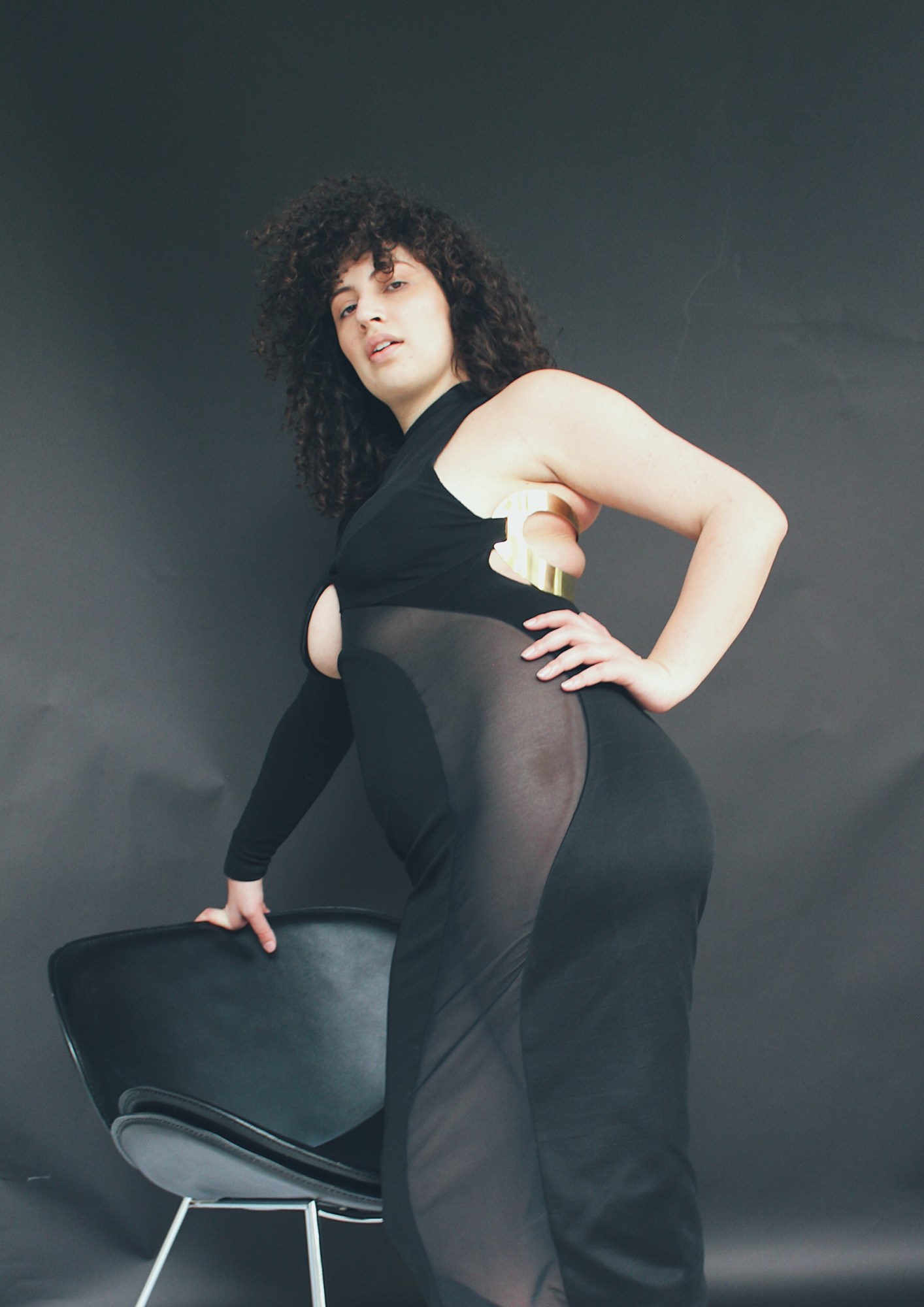
Karoline’s work may, in a certain sense, be perceived as antagonistic — a call to arms against the body ideals that dominate both in the industry she’s chosen to work in and the culture she’s a product of. Such readings aren’t wrong, per se, but they ignore the source of her collection’s essential power — that it’s a proud reclamation of self. “I think that my work challenges industry beauty standards, and I also wanted to contradict this Brazilian sense of what beauty is. The two may be different, but they’re still ways of encouraging women to look a certain way. Ultimately, I just really wanted to create clothes that I could wear: I think that by being a little more natural and simply celebrating what I already had, I ended up contradicting both by default.”
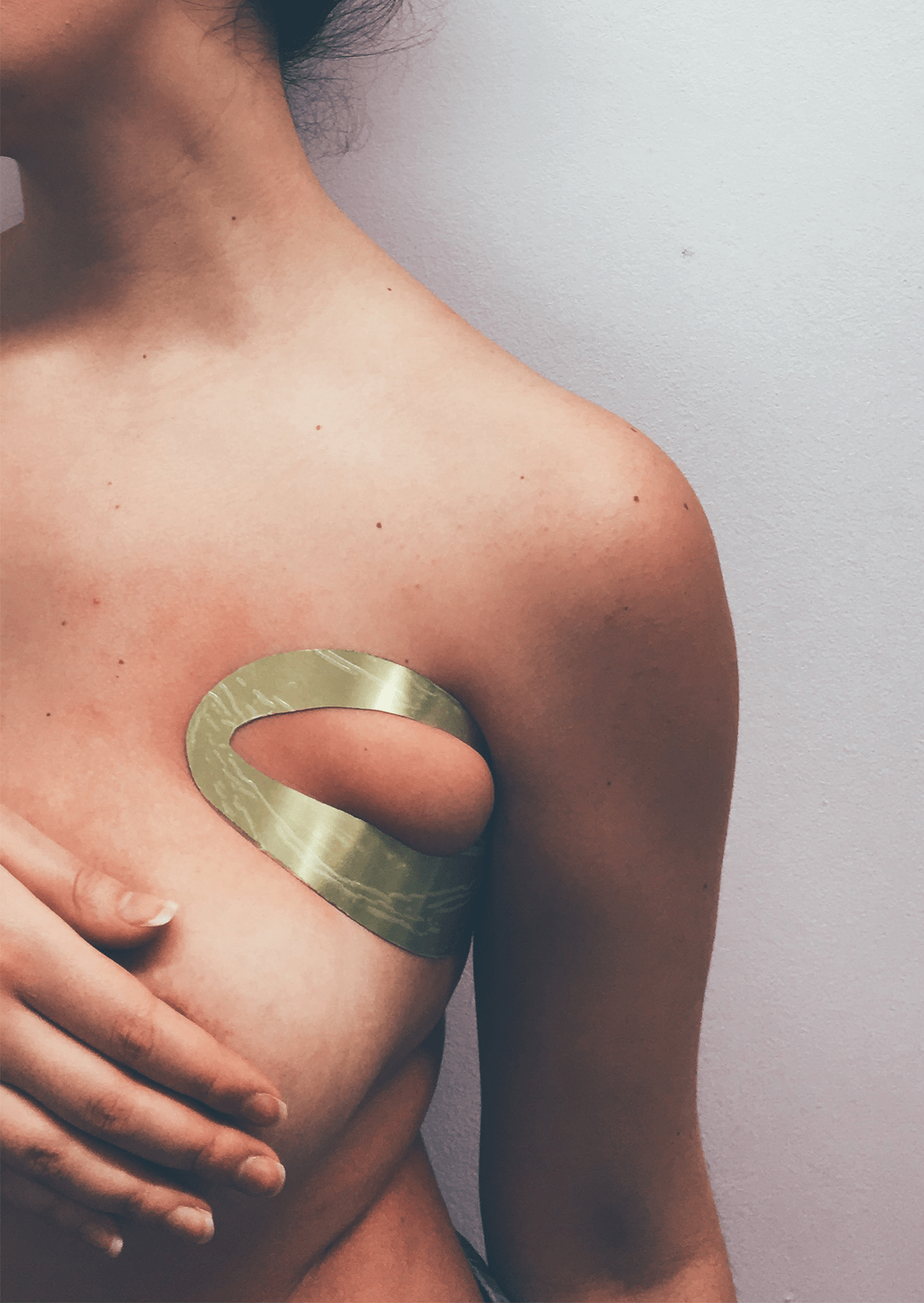
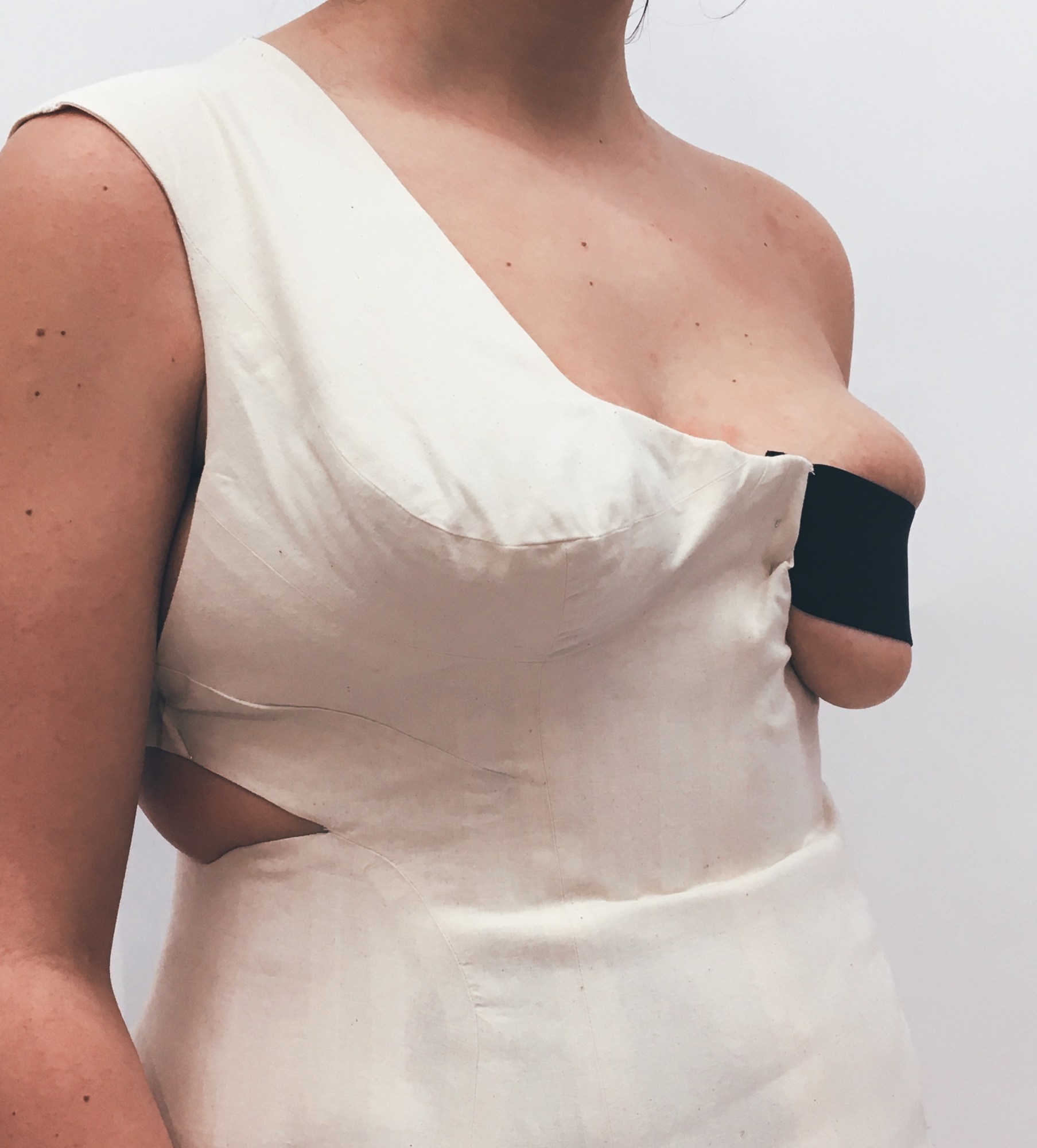
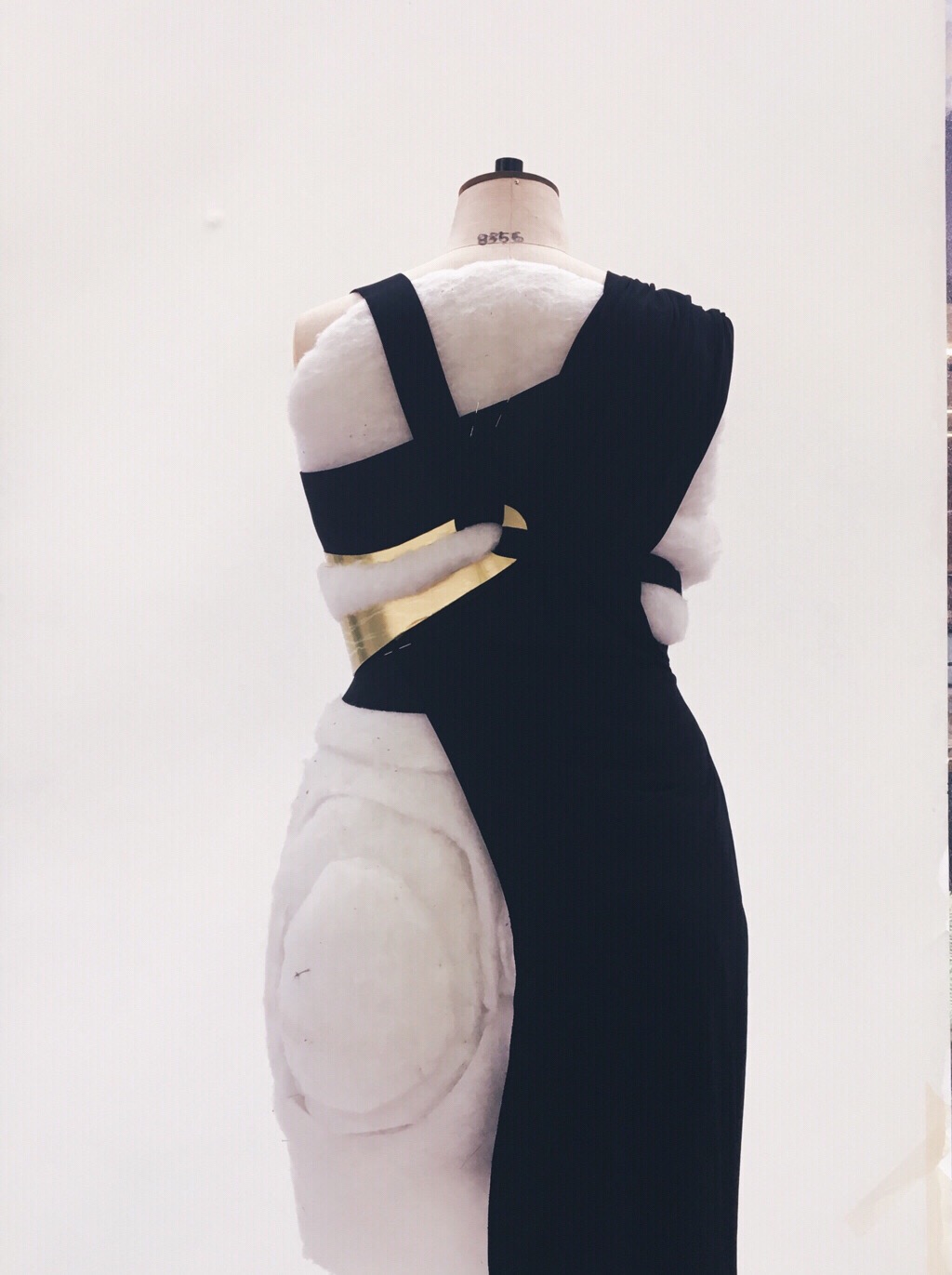
Images courtesy of Karoline Vitto
